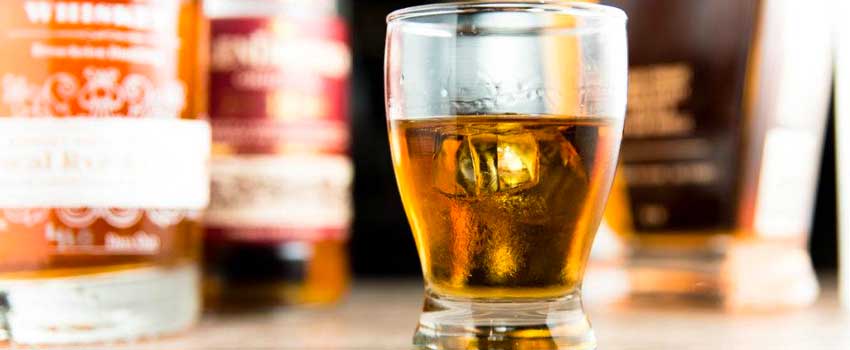Whiskey is, quite simply, distilled beer. The Scots use barley, your Kentucky Bourbon is made from at least 51% corn and Canadian Whisky’s got rye. These grains go through a series of processes to go from grain to alcohol -stay with us! Here’s who it works (we’ll go with single-malt Scotch’s life cycle as our example today):
MALTING
Once the grains are harvested and cleaned, they need to go through a process called malting in order to release the sugars needed to turn into alcohol.
- Grains are harvested, cleaned and poured directly onto the planked, wooden floors of a malting house. These wide, open rooms are filled with undulating waves of grains, about 5″ deep.
- The barley is dried for a little over a month until the grains, when tested, measur less than 14% water content.
- Here comes the first set of catalytic conversions! The grains are now soaked and drained and soaked and drained and…you get the picture. They are soaked and drained for a period of three days to begin sprouting. This process unleashes a series of enzymes that will allow the starches inside each grain of barley to break down into sugars (bread bakers, this process also produces enzymes that make yeast very happy, which is why you see malted barley flour mixed in with some of your favorite flours).
- For the following 5 days, the grains are raked and turned over so that each grain can achieve a moisture content of 46%.
DRYING AND GRINDING
- Break out the cigars, folks- it’s smoking time. This drying-out phase traditional involves smoking out the grains from underneath the planks in the floor, but never hotter than 130F. This stage is how some whiskeys are imparted with peat flavor.
- The dried barley, now fully fattened up, sweetened up, germinated and dried, is ground into a flour.
FERMENTATION
- The malted barley flour that has so been so meticulously cared after is going to get hosed. Hot water is introduced in three stages, getting hotter each time, to leach the sugars out of the flour and start the process of fermentation. Wait- what is fermentation? Plainly stated, the sugars in the barley are waking up in this hot bath and converting into Carbon Dioxide (bubbles in your beer)! and Ethyl Alcohol.
- Once sufficiently soaked, the fermentation is allowed to take place over 4 days in large barrels, keeping the mash just warm enough to excited the yeast but not so hot as to kill it.
- Once fermentation has completed its course, the mash, or beer, is held for 4-5 more days at a cooler, more comfortable temperature.
DISTILLATION STATION
- Your beer is now has a respectable alcohol content of 8-9%. Imagine for a moment that your chemistry teacher replaced your glass beakers with very large copper ones. These are copper stills. They get beer poured in them.
- The beer is warmed slowly and evenly so as to have the alcohol, but not the beer, evaporate up the narrow channel at the top of the Hershey kiss-shaped stills. The vapors of alcohol are carried in tubes down to oak casks (barrels).
MATURATION
- It’s time for these young vapors to grow up and mature. They’ll need at least three years in the casks to develop the flavor they need, drawing from the grains they grew from to the smoke they were dried with.
- Should your whiskey care for the distinguished Single Malt designation, it’ll have to stay in its cask for at least 10 years.
- Once you have tested the whiskey for perfection, you’ll bottle it up and savory its flavors. Or mix it into a killer cocktail or punch.
MATTHEW BIANCANIELLO’S PUNCH BOWL
Ingredients
Matthew Biancaniello’s Punch Bowl
| 1-1/2 cups | Honey | |
| 1/2 cup | Water | |
| 4 cups | Irish Whiskey | |
| 2 cups | Batavia Arrack | |
| 2 cups | Fresh lemon juice | |
| 8 cups | Blood orange juice | |
| 2 cups | Aquavit | |
| 4 ounces (1/2 cup) | Freshly squeezed ginger juice (you can ask your smoothie shop to hook this up for you) |
Directions
- Bring the honey and water to a simmer and stir until dissolved. Remove from heat and cool to room temperature (or make this days or weeks ahead and store in the fridge until you’re ready to use it).
- Mix all of your ingredients together in a very large bowl. Add in one large ice cube one hour before serving to dilute and cool to the perfect punchbowl temp.

